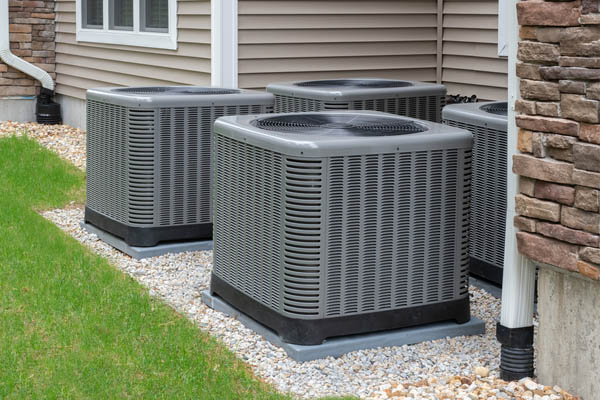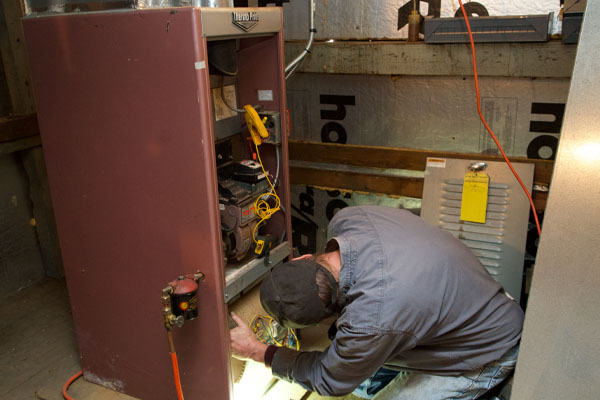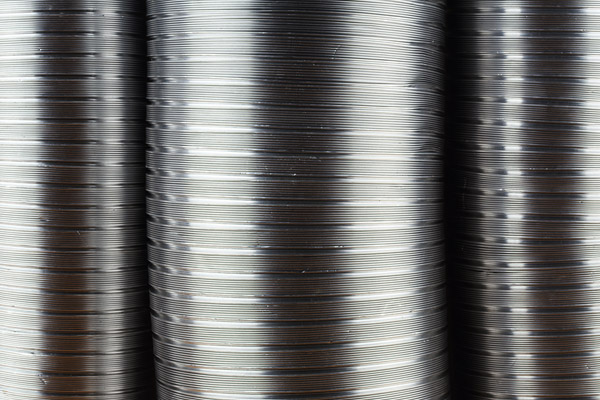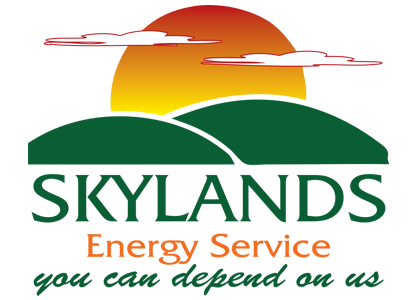
Whether you’re a first-time buyer or looking to replace an existing setup, deciding on the right HVAC system is crucial. With options like forced air and central air systems, choosing the right type can significantly impact your home’s comfort and energy efficiency. This comprehensive article will discuss the distinctions between these two popular system types (central vs forced air systems), ensuring you are well-informed to make a decision that suits your home’s requirements.
Navigating the complex world of HVAC terminology can be daunting. At Skylands Energy Service, renowned for our expertise and long-standing experience across Central New Jersey, we aim to simplify this process for you. Our commitment is to ensure you possess all the crucial knowledge to make an informed decision about your HVAC system. With our expert team on your side, you can feel confident that choosing us is the best decision for your heating and cooling requirements.
Exploring Forced Air Systems: Definition and Functionality
Table of Contents
The term “forced air” is commonly used by HVAC experts to describe systems that distribute heated air across a home via a network of ducts and vents. This description, however, only scratches the surface. In reality, a forced-air system encompasses any HVAC setup that propels temperature-controlled air into living spaces.
Typically, when HVAC professionals mention forced air, they refer to systems equipped with furnaces or heat pumps.
Understanding Furnace Operations

Whether powered by gas, oil, or electricity, furnaces fundamentally operate under the same principles to heat your home. Here’s how they work:
- Heat Generation: Furnaces start by producing heat through the combustion of propane, oil, natural gas, or by converting electricity.
- Heat Transfer: This generated heat is transferred to a heat exchanger, which warms up as the furnace operates.
- Air Heating: As the home’s air circulates through the ductwork, it passes over the hot heat exchanger and absorbs warmth.
- Air Distribution: Equipped with a blower, the furnace pushes this warmed air through the ducts to heat various rooms consistently.
Due to their reliance on blowers to distribute heated air, these systems are often referred to as forced-air furnaces.
Heat Pump Operations Explained
A heat pump is a versatile equipment that heats and cools your home, operating much like an air conditioner, but with a notable exception—it reverses its function depending on the season.
Here’s how it effectively manages indoor temperatures throughout the year:
- Heat Extraction and Transfer: During colder months, the heat pump extracts warmth from external sources—air, ground, or water—using an evaporator coil. This warmth is then delivered to a heat exchanger within the system.
- Evaporation: The refrigerant evaporates when ambient heat comes in contact with the refrigerant within the heat pump. This transformation from liquid to vapor captures heat efficiently.
- Compression: The evaporated refrigerant is compressed by the heat pump’s compressor. This compression significantly increases the temperature of the vapor.
- Condensation: As the hot vapor moves into the condenser, it cools and reverts to its liquid state. The condenser acts as a secondary heat exchanger, transferring the heat to water in the central heating system.
- Heat Distribution: Finally, the system disperses this heat throughout the home. Depending on the type of heat pump, this may be achieved through underfloor piping, radiators, or forced air via ductwork and motorized blowers.
Central Air Conditioning: How It Keeps Your Home Cool
Central air conditioning systems provide a consistent and efficient cooling solution using a closed refrigerated air loop. Here’s a breakdown of how central air works to maintain a comfortable temperature in your home:
- Air Intake: Warm indoor air is drawn into the system through a vent and passes over the evaporator coils.
- Heat Absorption: These coils, filled with refrigerant, absorb heat from the air, cooling it down. The now-chilled air is then circulated back into the house through ductwork.
- Compression: The refrigerant, having absorbed the heat and turned into a gas, travels to the compressor. Here, its volume is reduced, which increases both temperature and pressure.
- Heat Release: The high-pressure gas moves to the condenser located in the outdoor unit. It releases the absorbed heat to the outside air and, in doing so, cools down and reverts to a liquid state.
- Recirculation: This cooled refrigerant is then cycled back to the evaporator coils to repeat the process.
By continually cycling refrigerant and cooling air, central air conditioning systems ensure your home remains cool and comfortable even during the hottest days.
Central Air vs. Forced Air: Understanding the Distinctions

The primary distinction between central air and forced air systems lies in their specific functions. Central air systems are exclusively designed for cooling. They utilize a network of ducts, vents, and a plenum—a central chamber that distributes cooled air—to regulate temperature throughout your home.
On the other hand, a forced air system can refer to any HVAC system that uses a blower to distribute air through the home’s ducts. This can include heating and cooling systems, such as furnaces and central air conditioners. Essentially, while central air systems focus solely on cooling, forced air systems can provide both heating and cooling, depending on the setup.
Despite their functional differences, these systems often use the same ductwork to distribute air, which can lead to confusion. Many HVAC professionals might use the terms interchangeably due to their similar infrastructure and the shared use of ducts in distributing temperature-controlled air.
Choosing Between Forced-Air and Central Air HVAC Systems
When selecting the right HVAC system for your home, consider your current infrastructure and specific climate control needs. A forced-air system offers integrated heating and cooling with enhanced air filtration, making it ideal for improving indoor air quality and managing humidity efficiently. These systems are energy-efficient, require minimal maintenance, and can help reduce monthly energy costs.
Conversely, a central air system focuses exclusively on cooling and works well if your home already has ductwork in place. Modern central air units are highly efficient and effective at maintaining a comfortable, consistent temperature, especially in humid conditions.
Regardless of the type you choose, ensure a skilled HVAC technician installs and maintains your system to optimize performance and efficiency, which can lead to significant savings on utility bills. The choice between forced air and central air often comes down to whether you need a comprehensive solution for both heating and cooling or a specialized system for cooling alone.
Central Vs. Forced Air FAQs

What Should I Keep In Mind When Choosing Between Forced Air Vs. Central Air Systems?
When deciding between forced air and central air systems, it’s essential to assess your home’s specific needs, existing infrastructure, and climate conditions. Consider factors such as the size of your home, energy efficiency goals, and whether you prioritize integrated heating and cooling or specialized cooling alone. Consulting with HVAC professionals can also provide valuable insights tailored to your individual circumstances.
How Can I Ensure Optimal Performance And Efficiency From My Chosen HVAC System?
To maximize the performance and efficiency of your HVAC system, regular maintenance is crucial. Schedule professional inspections and tune-ups to address any potential issues and keep your system running smoothly. Additionally, proper insulation, sealing ductwork, and investing in energy-efficient equipment can help reduce energy consumption and lower utility bills over time.
What Role Does Professional Installation Play In The Effectiveness Of An HVAC System?
Professional installation is vital for ensuring the proper sizing, placement, and integration of your HVAC system within your home. HVAC technicians have the expertise to assess your home’s unique requirements, recommend the most suitable equipment, and install it correctly to optimize performance and efficiency. Additionally, professional installation often comes with warranties and guarantees, providing peace of mind and long-term support for your investment.
Conclusion
HVAC systems are key for maintaining a comfortable and inviting atmosphere in our homes, whether for everyday living or when hosting guests. The decision between forced-air and central air systems largely depends on your specific environmental needs and personal preferences.
Consider the unique aspects of your living space and weigh the benefits of each system’s capabilities. Whether it’s the versatility of a forced-air system for heating and cooling or the specialized efficiency of a central air system for cooling alone, the right choice ensures your home remains an enjoyable space throughout the year.
Call Skylands Energy Service for All Your HVAC Needs
Skylands Energy Service delivers top-tier heating and cooling services across Central New Jersey. Our team of professionally certified technicians excels in HVAC tune-ups, repairs, installations, and replacements, ensuring your system operates flawlessly.
We provide the most competitive prices in the region. Our maintenance services enhance comfort and energy efficiency, helping to reduce your heating and cooling expenses. Whether you need a repair or a new HVAC system, we’ll recommend the optimal solution that fits your budget.
Skylands Energy Service stands behind its services with a solid satisfaction guarantee. To arrange a service visit and receive a complimentary, in-home estimate, contact Skylands Energy Service today.
Contact us now at (908) 707-1776 to find out more! To view our service area, click here.

Related Articles:
- 5 Signs That Indicate Your HVAC Blower Motor Requires Replacement
- 3 Destructive Habits That Compromise Your Air Conditioning System
- Understanding Air Conditioner Condenser Rust
- Enhancing Home Comfort: The Significance of an HVAC Maintenance Agreement
- Optimizing Your Home: Determining the Right Amount of Ventilation

